Abstract
A long-term follow-up of echolalia and correct question answering was conducted for 6 subjects from three previously published studies. The follow-up periods ranged from 26 to 57 months. In a training site follow-up, subjects were exposed to baseline/posttraining conditions in which the original trainer and/or a novel person(s) presented trained and untrained questions. Four subjects displayed echolalia below baseline levels, and another did so in some assessments. Overall, echolalia was lower than in baseline in 80.6% of the follow-ups. Five subjects displayed correct responding above baseline levels. No clear differences were noted in correct responding or echolalia between the trainer and novel-person presentations or between trained and untrained questions. In a follow-up in a natural environment conducted by a novel person, lower than baseline levels of echolalia were displayed by 3 subjects; 2 subjects displayed lower than baseline levels in some assessments. Two subjects consistently displayed correct responding above baseline, and 3 did so occasionally. Issues related to the study of maintenance are discussed.
Full text
PDF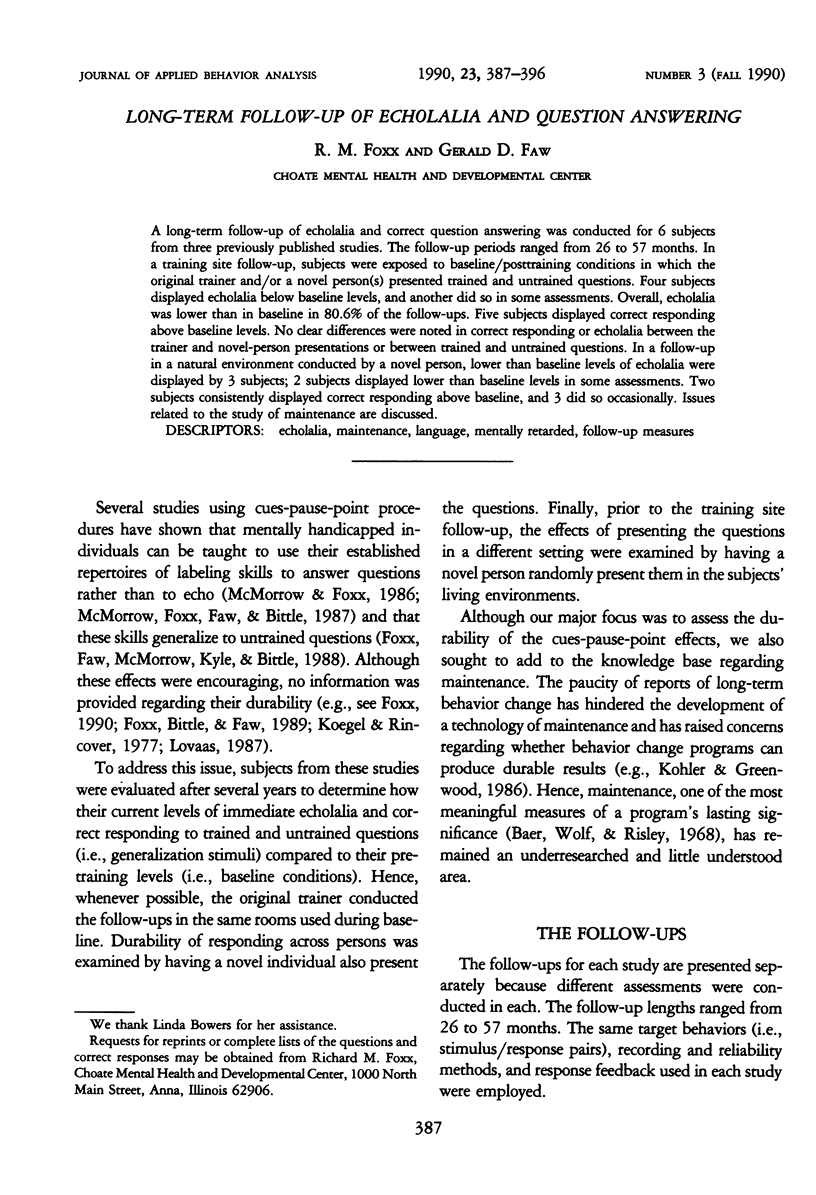
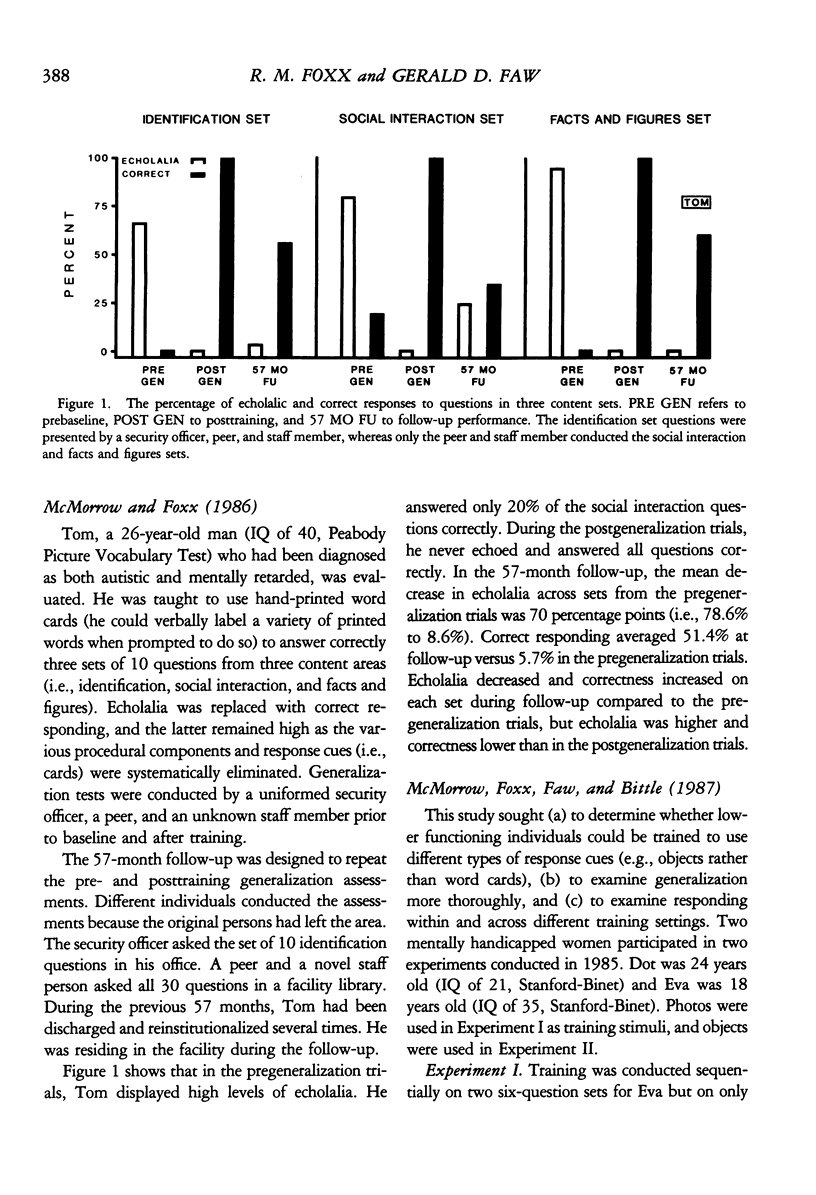
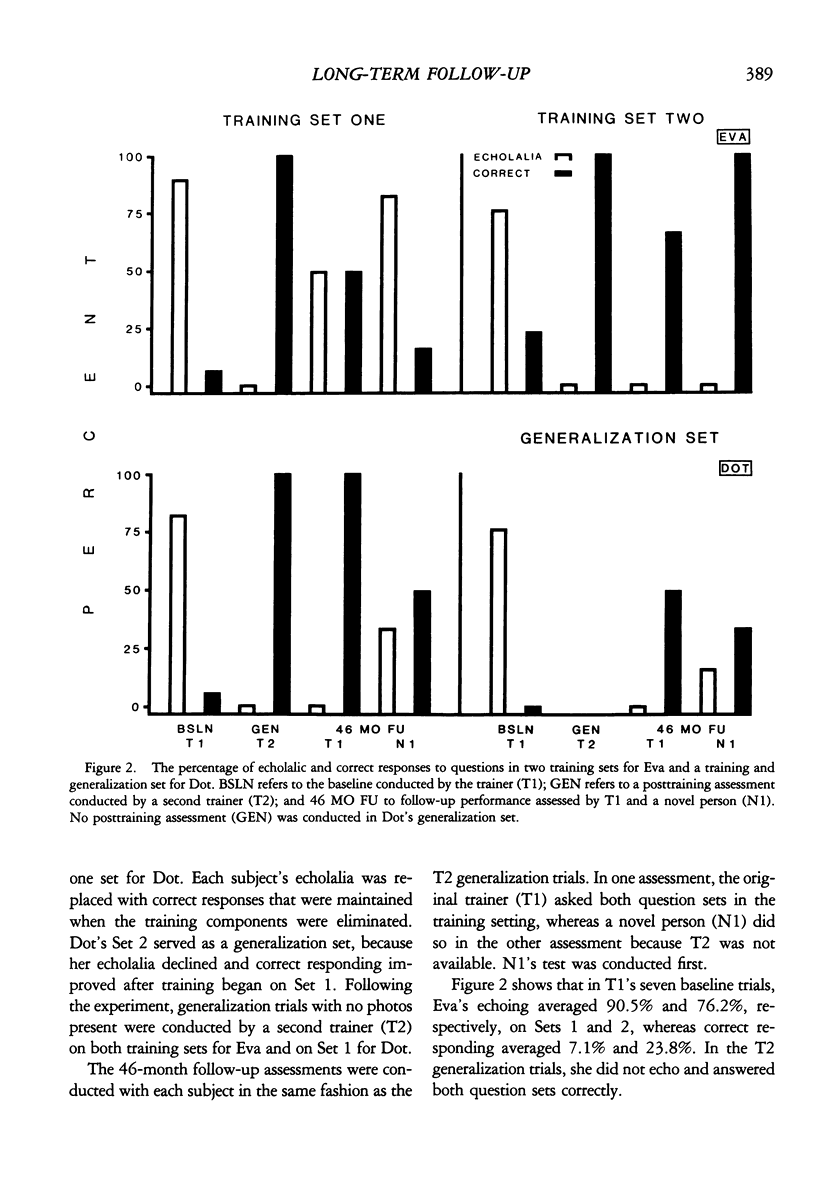

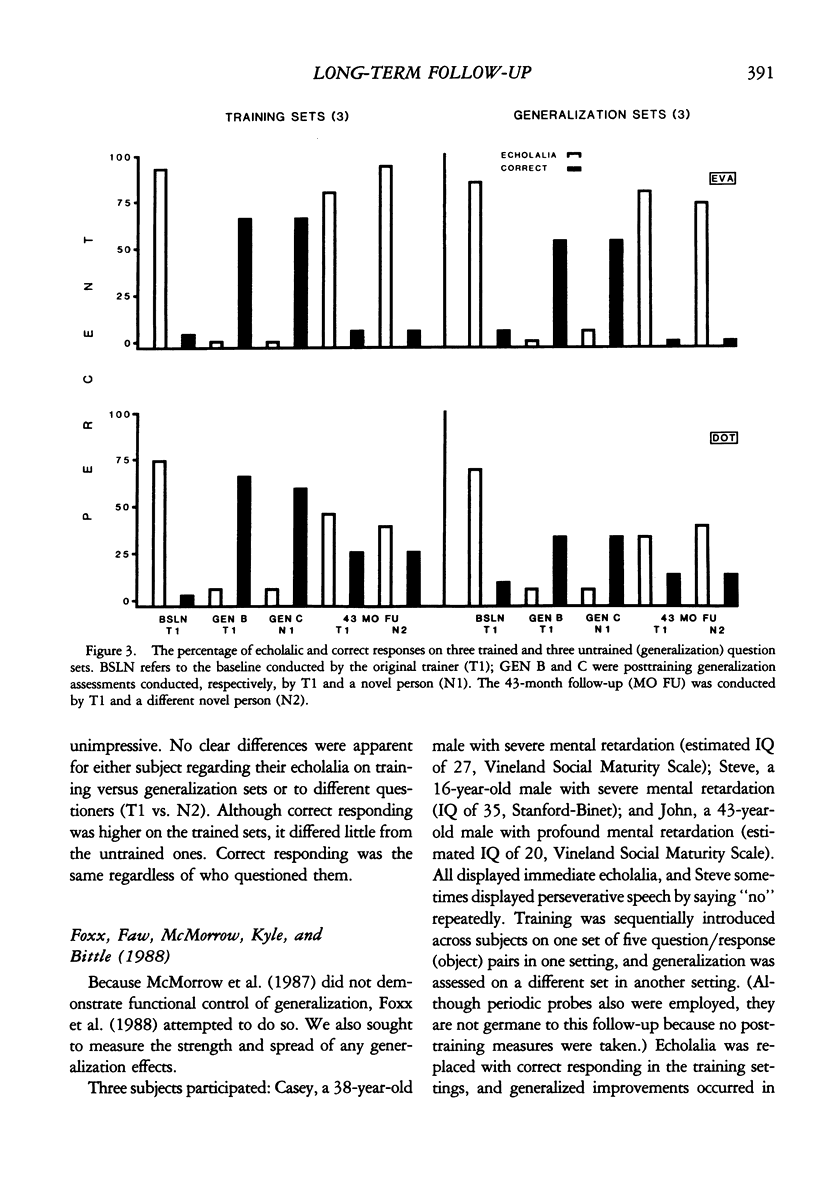
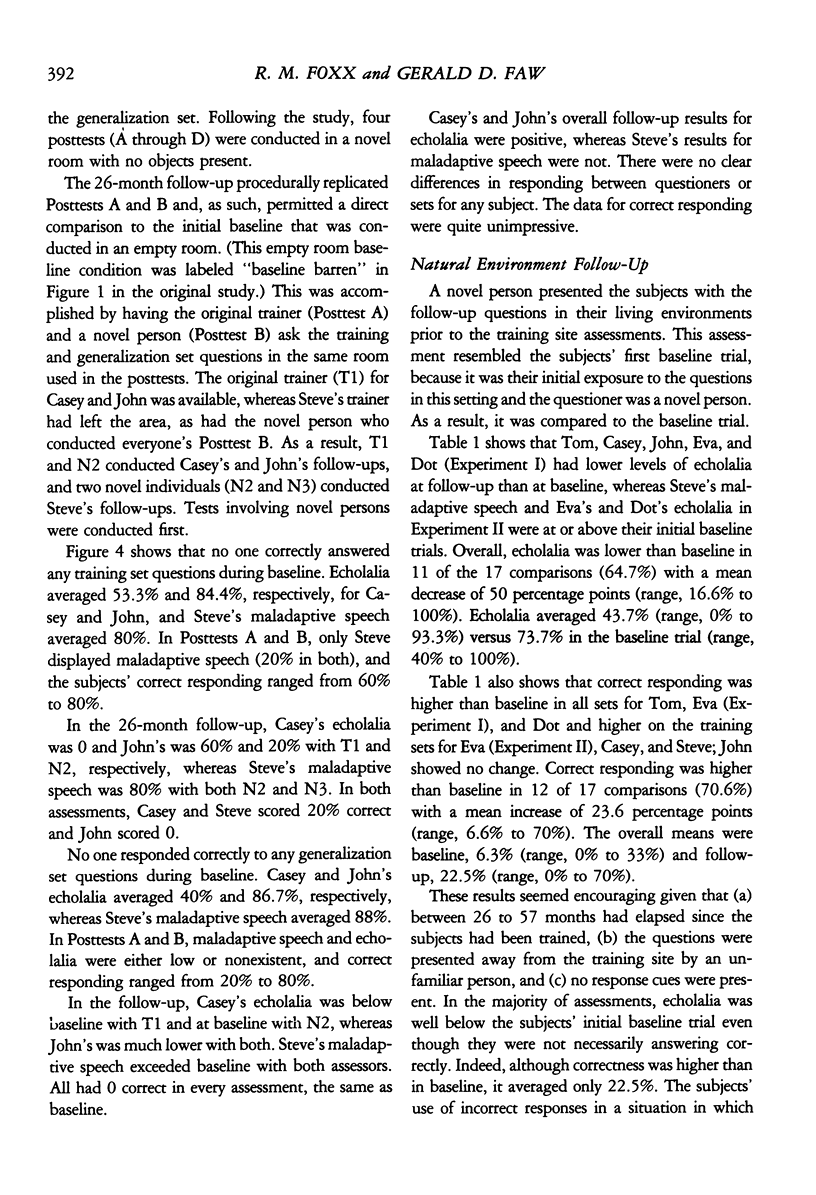
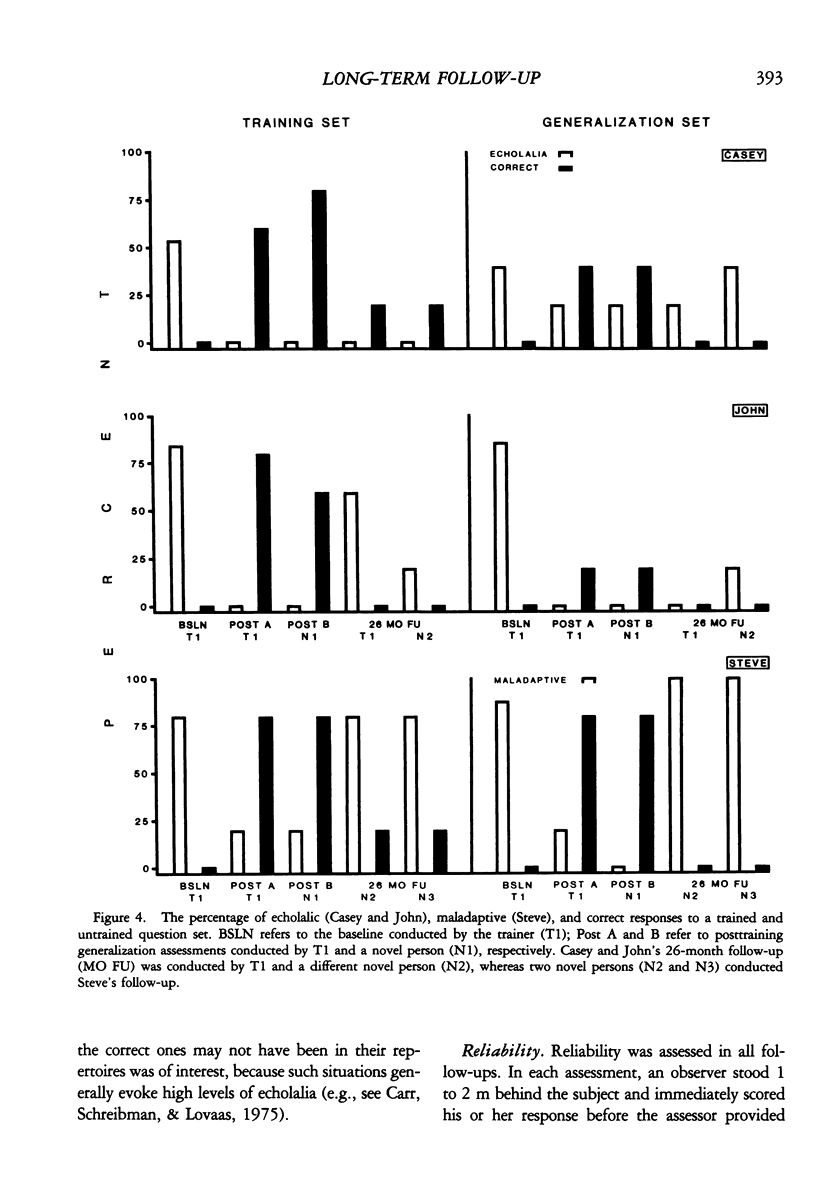
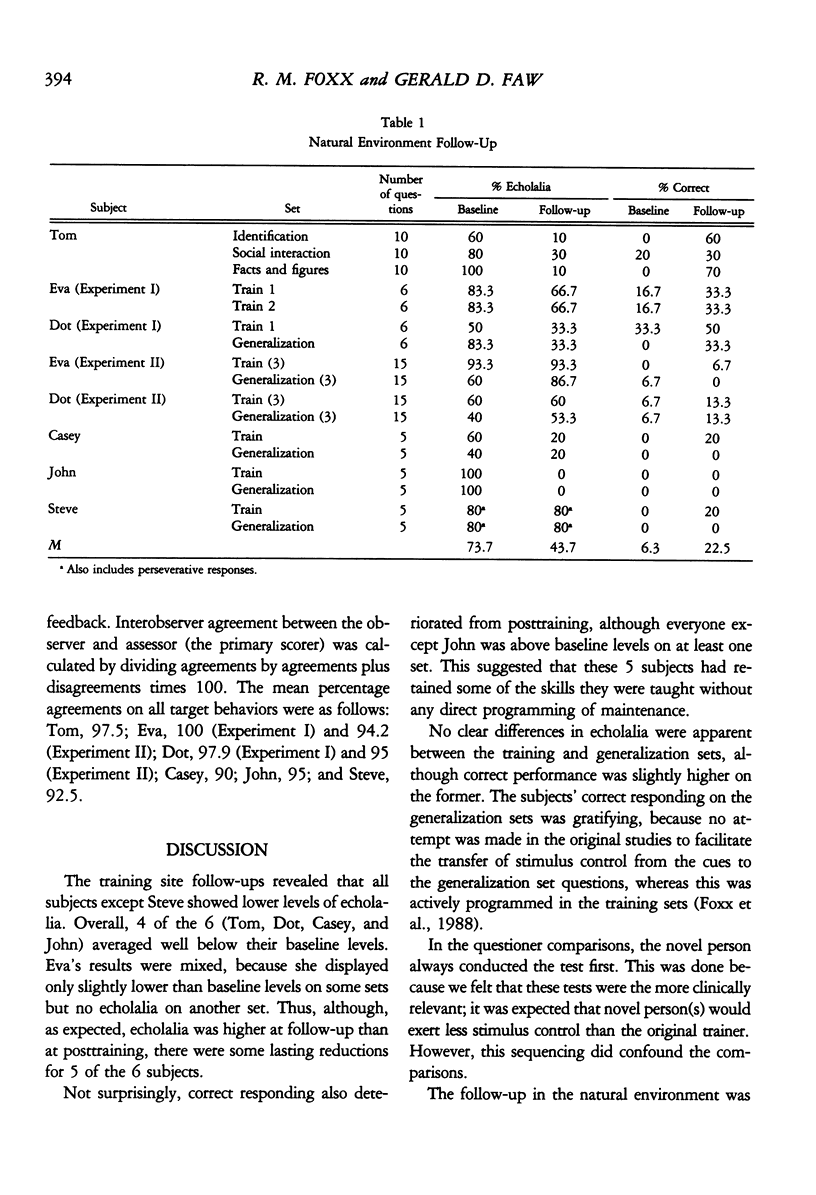
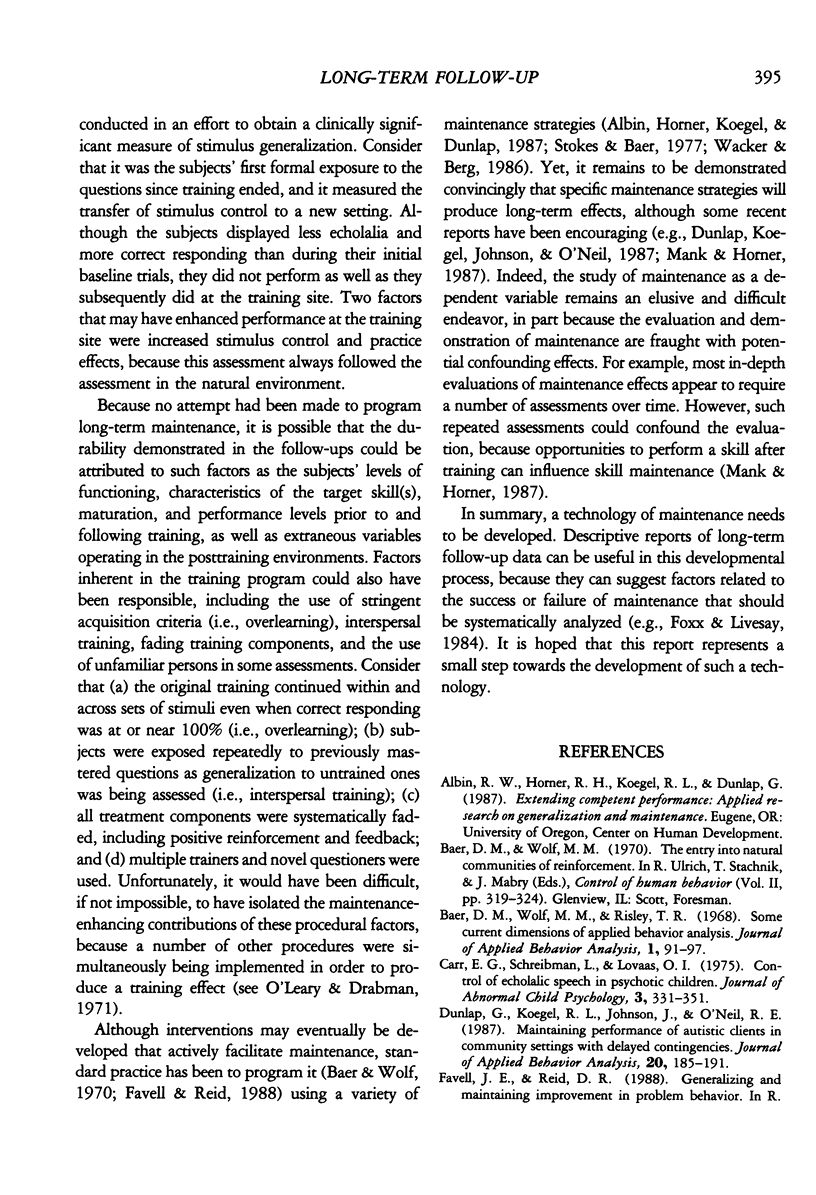
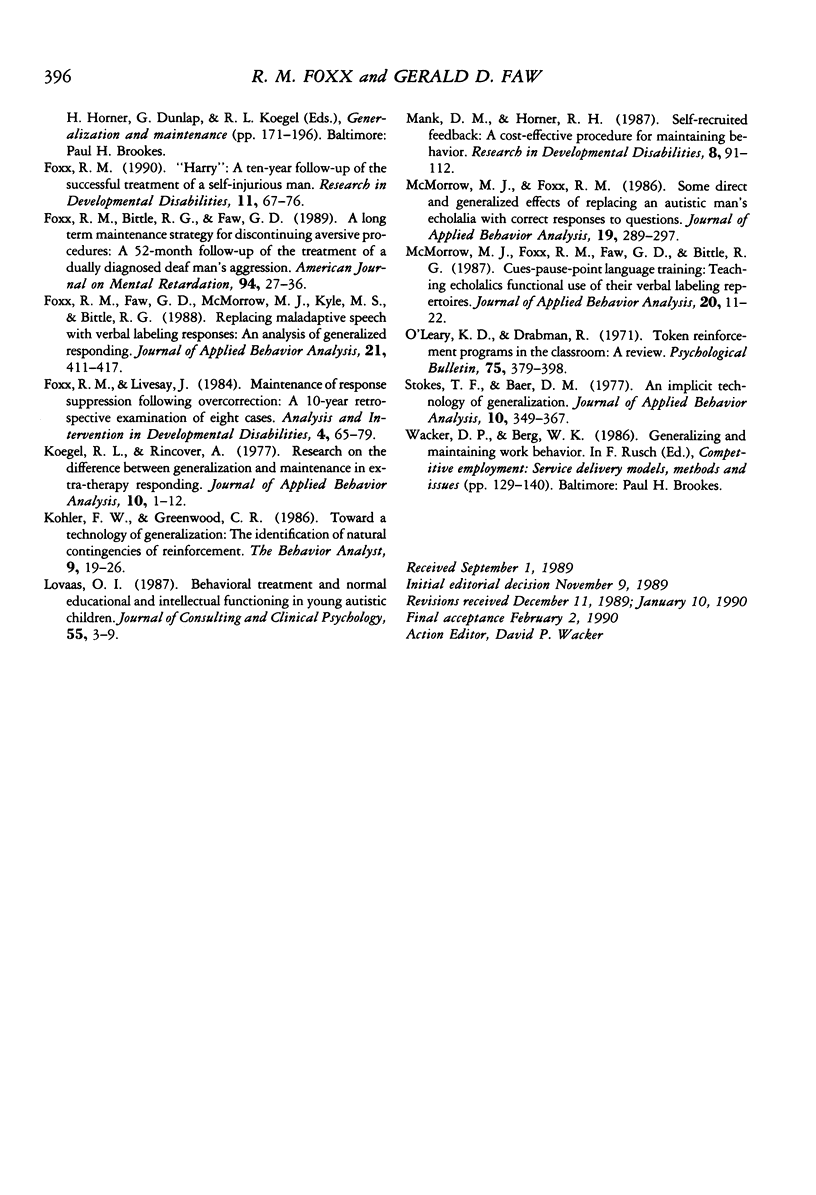
Selected References
These references are in PubMed. This may not be the complete list of references from this article.
- Baer D. M., Wolf M. M., Risley T. R. Some current dimensions of applied behavior analysis. J Appl Behav Anal. 1968 Spring;1(1):91–97. doi: 10.1901/jaba.1968.1-91. [DOI] [PMC free article] [PubMed] [Google Scholar]
- Carr E. G., Schreibman L., Lovaas O. I. Control of echolalic speech in psychotic children. J Abnorm Child Psychol. 1975;3(4):331–351. doi: 10.1007/BF00917420. [DOI] [PubMed] [Google Scholar]
- Dunlap G., Koegel R. L., Johnson J., O'Neill R. E. Maintaining performance of autistic clients in community settings with delayed contingencies. J Appl Behav Anal. 1987 Summer;20(2):185–191. doi: 10.1901/jaba.1987.20-185. [DOI] [PMC free article] [PubMed] [Google Scholar]
- Foxx R. M. "Harry": a ten year follow-up of the successful treatment of a self-injurious man. Res Dev Disabil. 1990;11(1):67–76. doi: 10.1016/0891-4222(90)90005-s. [DOI] [PubMed] [Google Scholar]
- Foxx R. M., Bittle R. G., Faw G. D. A maintenance strategy for discontinuing aversive procedures: a 52-month follow-up of the treatment of aggression. Am J Ment Retard. 1989 Jul;94(1):27–36. [PubMed] [Google Scholar]
- Foxx R. M., Faw G. D., McMorrow M. J., Kyle M. S., Bittle R. G. Replacing maladaptive speech with verbal labeling responses: an analysis of generalized responding. J Appl Behav Anal. 1988 Winter;21(4):411–417. doi: 10.1901/jaba.1988.21-411. [DOI] [PMC free article] [PubMed] [Google Scholar]
- Koegel R. L., Rincover A. Research on the difference between generalization and maintenance in extra-therapy responding. J Appl Behav Anal. 1977 Spring;10(1):1–12. doi: 10.1901/jaba.1977.10-1. [DOI] [PMC free article] [PubMed] [Google Scholar]
- Lovaas O. I. Behavioral treatment and normal educational and intellectual functioning in young autistic children. J Consult Clin Psychol. 1987 Feb;55(1):3–9. doi: 10.1037//0022-006x.55.1.3. [DOI] [PubMed] [Google Scholar]
- Mank D. M., Horner R. H. Self-recruited feedback: a cost-effective procedure for maintaining behavior. Res Dev Disabil. 1987;8(1):91–112. doi: 10.1016/0891-4222(87)90042-4. [DOI] [PubMed] [Google Scholar]
- McMorrow M. J., Foxx R. M., Faw G. D., Bittle R. G. Cues-pause-point language training: teaching echolalics functional use of their verbal labeling repertoires. J Appl Behav Anal. 1987 Spring;20(1):11–22. doi: 10.1901/jaba.1987.20-11. [DOI] [PMC free article] [PubMed] [Google Scholar]
- McMorrow M. J., Foxx R. M. Some direct and generalized effects of replacing an autistic man's echolalia with correct responses to questions. J Appl Behav Anal. 1986 Fall;19(3):289–297. doi: 10.1901/jaba.1986.19-289. [DOI] [PMC free article] [PubMed] [Google Scholar]
- Stokes T. F., Baer D. M. An implicit technology of generalization. J Appl Behav Anal. 1977 Summer;10(2):349–367. doi: 10.1901/jaba.1977.10-349. [DOI] [PMC free article] [PubMed] [Google Scholar]


